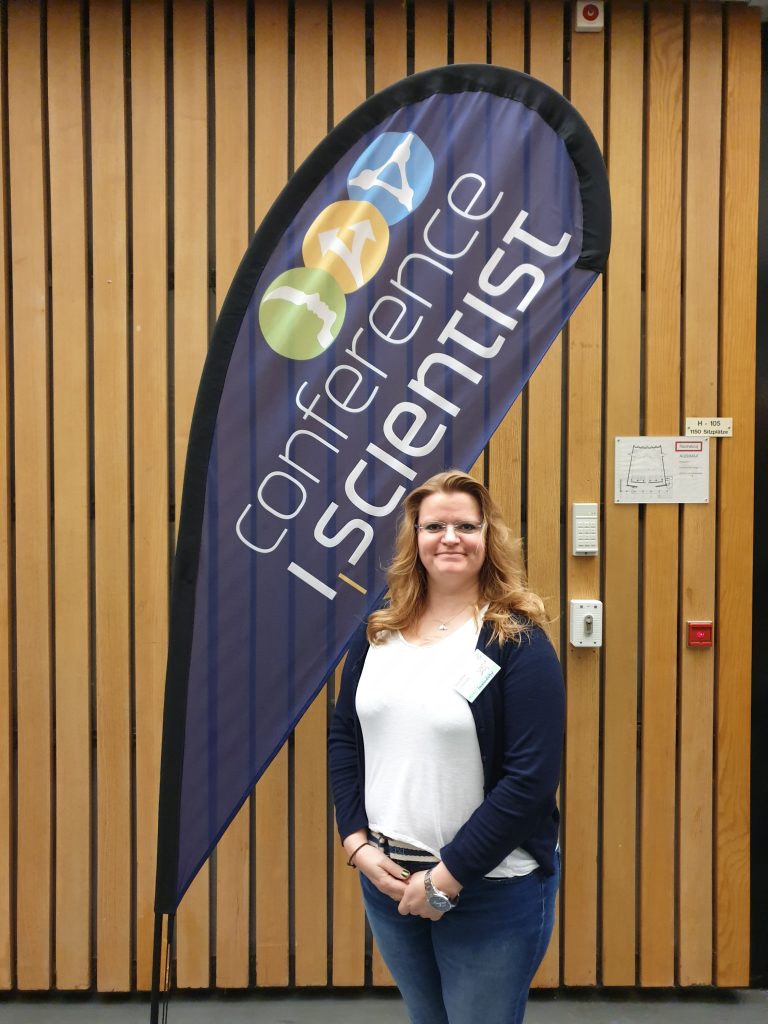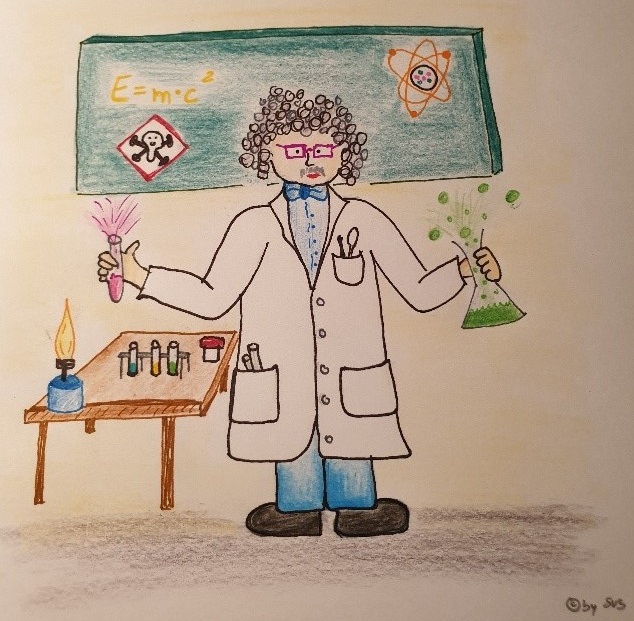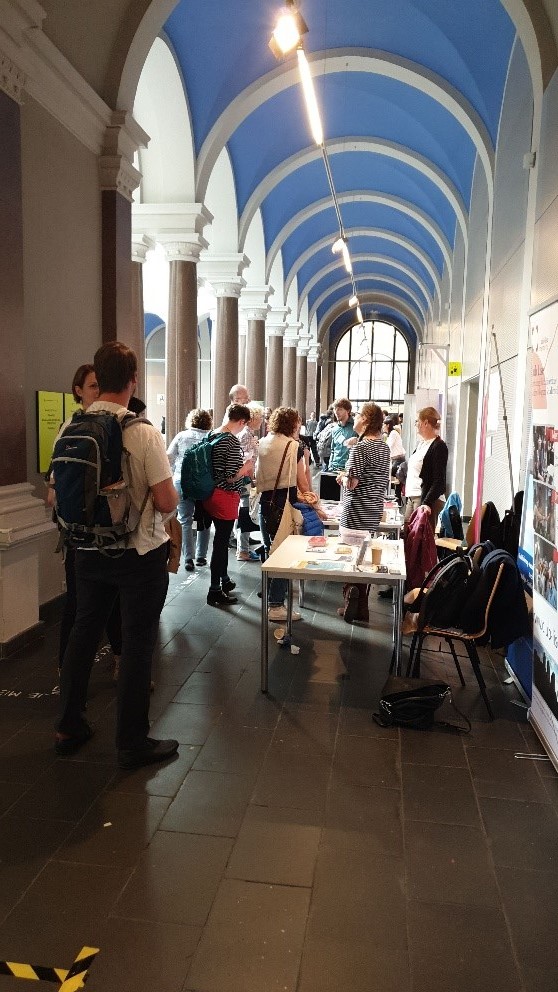
© Susanne V. Schmidt.
„We are highly specialized, but need to re-learn how to think in a bigger context“, was one of the major claims of Prof. Dr. Rita Süssmuth (former President of the German Federal Parliament Bundestag and Federal Minister for Family Affairs, Women, Youth and Health) which she expressed in her inspiring speech at the iScientist conference in Berlin.
My name is Susanne Schmidt from the Institute of Innate Immunity and I would like to share my impressions about the iScientist conference with you. In the following I will focus on gender equality and the support of female scientists since in my opinion these were the most professional and informative presentations I participated.
Reports on prejudice, harassment and inequality by female scientists
Porf. Dr. Süssmuth first shared her experiences on the role of women in science and continued to furthermore elaborate on her expectations and the pressure under which she had to find her own balance between her life as a scientist, politician, and mother. From her own experience she felt that women are welcome in the academic world because first of all they are useful. In her opinion many programs for the promotion of young female scientists expect too much from women. Many of the existing women’s movements are not visible enough and are not heard in consequence. Until today, the excellence of universities in Germany correlates inversely with the number of female professorships. According to Prof. Christine Ahrend (Department of Land and Sea Transport Systems, TU Berlin) only 20% of the professorships at German universities are held by women. So far, universities are constantly trying to improve this number, but if the current pace of progression is kept constant, it will need until the year 2060 to achieve the goal of 33% female professorships at universities.

© Susanne V. Schmidt
For Prof. Ahrend the causes for the bottleneck of women in academia is the stereotypical picture of a white male genious who devoted his life to science – a very provocative but also old fashioned idea. Still, it seems reasonable and explainable by an unconscious cultural bias. Shohini Ghose, Professor of Physics and Computer Science (Wilfrid Laurier University, Canada) confirmed this idea by an experiment. School children were asked by her to draw a picture depicting a scientist. It was striking that nearly all children painted a stereotypic white, Einstein-like looking man with crazy hair, holding dangerous lab equipment in his hands. She observed further that perception and environment influence the career of women dramatically. For example, women have less access to adequate resources for learning and are often mentored less in comparison to male fellow students. But please be cautious, the reasons for this bias cannot be pinned down on a specific feature. Combined with the role of a woman as a mother, taking care of children and the housework, women generally experience slower career developments. Antje Bahnik (Main Women’s Representative, TU Berlin) claims other reasons, like permanent availability, exhausting private relationships, temporary contracts, and parenthood for the low number of women in academic positions. It would be a mistake to conclude from the mentioned observations, that women are not treated equally in science, because Dr. Pauline Gagnon (CERN, Switzerland) reports that inequality is a general problem not only in science.
Ways to improve the situation for female scientists
One way to diminish inequality issues in our scientific community could be achieved by gender blinded grant applications. Dr. Jess Wade (Physics Department at Imperial College London, UK) reported that grant applications for Hubble projects of male scientists (24%) were much more successful in comparison to applications from female colleagues (12%). When the process was gender blinded, the success rate for grant applications between male (8%) and female (8,7%) scientists were nearly equalized. Dr. Wade encouraged female scientists to improve the promotion of their research projects. For example, it has been observed that male scientists cite their own research much more often.
Unconscious stereotypes are still imprinting the understanding of a successful scientist
One or two closing remarks from myself: this conference opened my eyes for the unconscious beliefs derived from the cultural environment we grew up or are living in. We carry this unconscious bias along with us and it shapes our behavior each and every day. In my opinion, the only way to improve the situation for women in academia is to get rid of stereotypes and falsely interpreted role models, but this might be beyond a scientific scope and rather concerns the society in itself. For example, it seems to me that a woman is called completely emancipated and successful if she achieved to become a mother and a career woman, like the president of the European commission Ursula von der Leyen who is mother of seven children and a very successful politician. The arguments exchanged during the conference support my impression, that the reduced number of women in leading positions is a generalized problem. It derives from a variety of circumstances, including cultural and unconscious expectations of how men and women have to be. The fact that women react in certain situations differently from men and have less self-confidence might be disadvantageous for the career of female scientist in a male dominated environment, but should not be argued as an excuse for us as women. Once identified such soft skill issues can be addressed in a variety of workshops offered for PhD students and PostDocs. Furthermore, it is sad but true, that the work as a leader is usually extremely exhausting and not family friendly. It might be heretic to say, that more kindergartens and women’s movements will not do the job. These structures have already been established and improved in the past. Maybe it is time now for us as female scientists to use these structures and empower our strong personalities! Let’s improve our networking, let’s help each other and let us be proud of our scientific work! Don’t be afraid to challenge professionally male colleague’s and promote your science – your male colleagues would do the same. Get into the driving seats girls, it’s your career!
Author: Susanne V. Schmidt, Institute of Innate Immunity
The iScientist conference – a place of exchange, tolerance and positive empowerment

© Susanne V. Schmidt
Over 500 scientists from different research areas, including life sciences and physics joined the iScientist conference at the TU Berlin this year. It offered talks on “Stereotypes and unconscious bias”, “Mental health in academia” and “Power abuse & harassment”. Scientists had the possibility to exchange experiences and opinions about inequality, gender sensitization, taboos in academia, working conditions, workload and career opportunities during several specialized discussion sessions.
During lunch breaks, the participants were able to introduce themselves to representatives of several companies, research foundations or graduate schools, like the BoMeRanG or Cluster of Excellence Immunosensation.

Very interesting essay! We definitely need more events of this kind in academia .
Pingback: Inequality Affects us All | ImmunosensationBlog